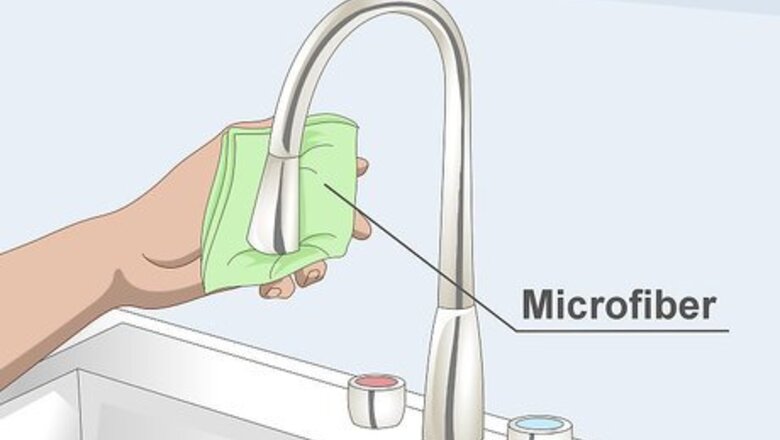
views
Cleaning Polished Nickel
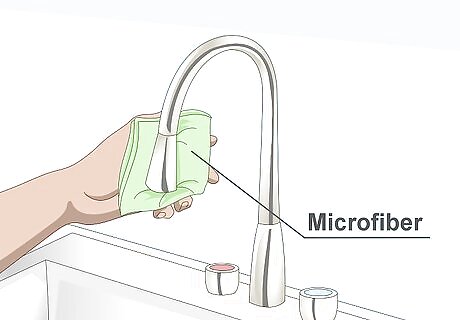
Wipe the nickel down daily. Use a microfiber cloth. Microfiber is soft enough to keep the surface from getting scratched. It's also very good at preventing dirty and grimy buildup. A few simple strokes will remove dust and water stains.
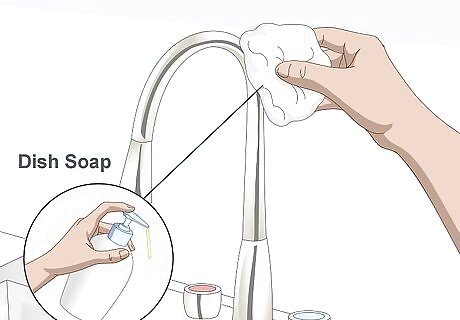
Use dish soap for routine cleanings. Opt for a mild detergent to keep the shiny surface intact. Apply the detergent to a damp cloth. Wipe the surface to remove stains made from water, toothpaste, soap scum, etc.

Remove hard water stains with a vinegar solution. If you see calcium deposits (also known as limescale) on your faucets, you have hard water. To tackle this problem, mix equal parts water and white vinegar. Dip a cloth in the solution. Lay the cloth on the stains or deposits and let it sit there for five minutes. Wipe the area when the five minutes are up.
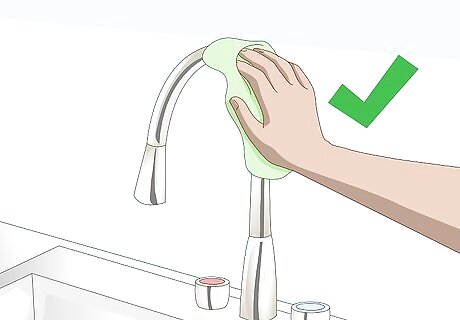
Dry the surface with a microfiber cloth. Move in a gentle circular direction to shine the surface. Continue until the nickel is completely dry. Do this after you have finished cleaning. If you have hard water, dry the surface any time it gets wet.
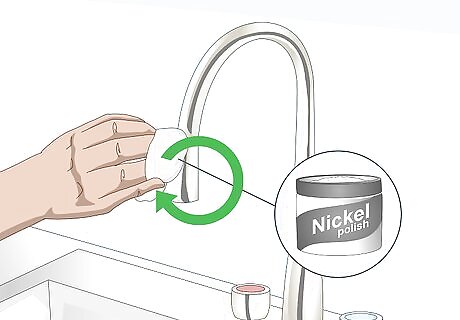
Polish the nickel. Apply a small amount of nickel polish to a clean cloth. Aim for a dollop, about the diameter of a nickel or ten-pence coin. Buff the surface in gentle circular strokes. This will give the nickel an added shine and reduce the risk of staining in the near future. Do this about once per week.
Cleaning Brushed Nickel
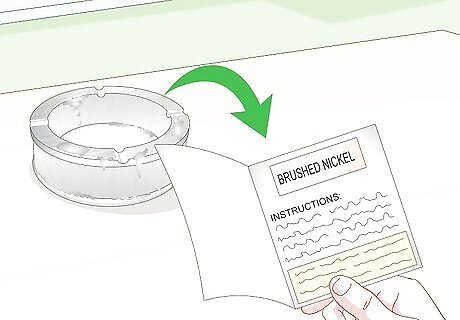
Check the manufacturer's instructions. Consult your user's manual if you have one. If you don't have a hard copy or file of a user's manual, check the manufacturer's website. Some manufacturers specify certain cleaning substances, cloths, or sponges to use in the cleaning process. No matter what you read or hear elsewhere, always defer to the manufacturer's advice.

Use dish soap for everyday cleaning. Water can stain brushed steel, but regular cleanings can prevent them from becoming an eyesore. Squeeze a few drops of soap onto a damp cloth. Wipe the surface using gentle circular strokes. Rinse the surface with water. Dry it with a clean dry cloth.

Combat limescale with a vinegar solution. Mix equal parts water and white vinegar. Soak a cloth in the solution. Wipe down the surface using gentle circular strokes. Don't lay the cloth on the surface. Even diluted vinegar can ruin a brushed nickel surface from too much exposure. Use a clean dry cloth to dry the surface, moving in gentle circular strokes. Continue until the metal is completely dry. If the vinegar doesn't work by itself, add a tablespoon (15 g) of cornstarch to the solution and repeat the process.
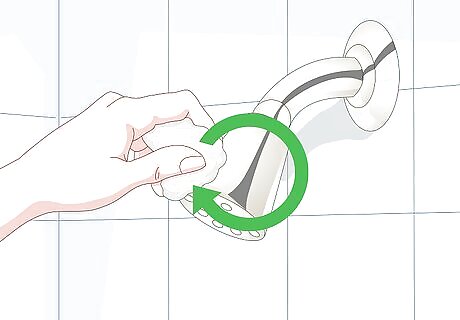
Polish the surface with a clean dry cloth. For brushed nickel, you don't need a special polish. Any soft cloth will do. Move in gentle circles over the entire surface. Aim for weekly polishings to maintain a “like-new” appearance.
Cleaning Nickel Silver
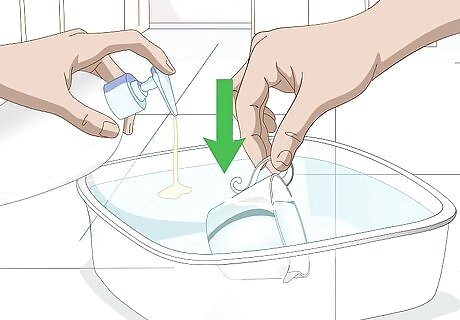
Wash the surface with mild detergent. If the object is free-standing or detachable, immerse it in a solution of warm water and a few drops of dish detergent. If you're cleaning a faucet or other nickel object that you can't immerse, add a drop of dish detergent to a wet cloth. Move in gentle circles. Continue until you've cleaned the entire surface. Rinse thoroughly either under running water or with a cloth soaked in clean cool water.
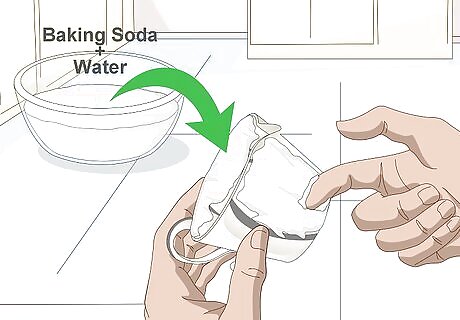
Use a baking soda paste for stubborn stains or tarnish. The amount of baking soda you'll need depends on how large the stain is. Add just enough water to form a thick paste. Cover the entire stain with the paste. Allow it to air dry. Rinse off the paste with warm water.
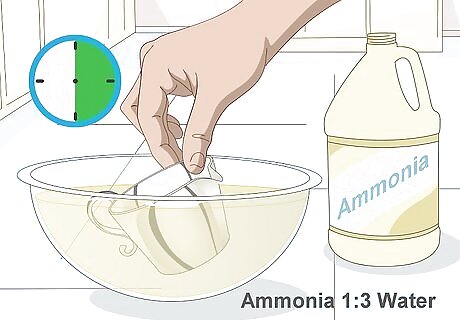
Combat stubborn stains with an ammonia solution. Mix one part ammonia and three parts water. Soak a rag in the solution. Lay the rag on the stain for about 30 minutes. If the nickel object is free-standing or can be detached, find a container large enough to fit the entire object. Submerge it in the solution and let it soak for 30 minutes. Rinse it off when the 30 minutes have passed.
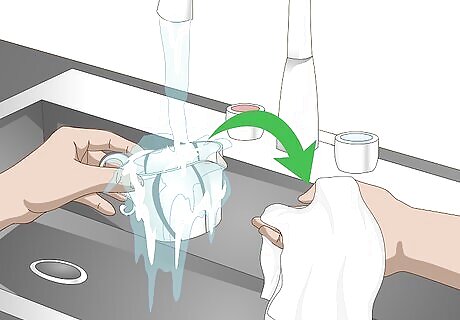
Rinse and dry the surface. Rinse the surface with a second dampened cloth. If you soaked the object, run it under running tap water until the cleaning agent is completely washed off. Dry the surface with a clean dry cloth.
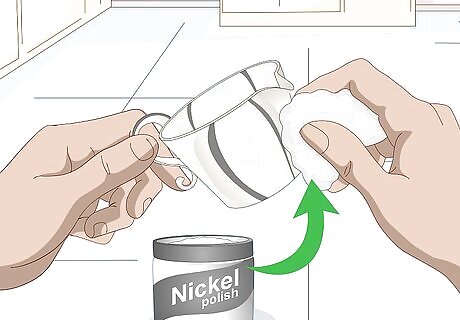
Finish with commercial polish. Apply the polish to a dry clean cloth. Follow the directions listed on the packaging. Dry the surface with a separate clean dry cloth. Polish the surface every week. You can also use commercial polish for cleaning if the baking soda paste doesn't completely remove the stain or tarnish.


















Comments
0 comment